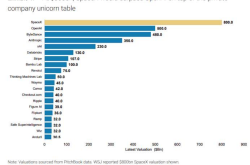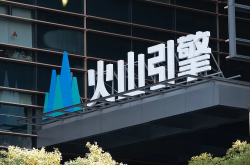Official Announcement: National Subsidies Extended, with 138 Billion Yuan of Central Funds Allocated in Stages
![]() 06/20 2025
06/20 2025
![]() 730
730
Since its inception last year, the trade-in policy has significantly boosted China's home appliance market and the broader consumer market, emerging as a pivotal force in stimulating consumption and expanding domestic demand. According to AVC data, from January to May 2025, total retail sales across all channels in China's home appliance market (excluding 3C products) amounted to 341 billion yuan, marking an 8.5 percentage point increase compared to the same period last year. This trade-in policy for consumer goods has effectively fueled a sustained recovery and enhancement in consumer spending.
From January to May 2025, total retail sales of consumer goods reached 20.3171 trillion yuan, up 5.0%. These figures underscore the robust growth momentum in both the consumer market and the home appliance market, driven by the trade-in policy. The 138 billion yuan of central funds are soon to be disbursed, with a clear annual funding arrangement in place. This year, the government has allocated 300 billion yuan in ultra-long-term special treasury bonds to strongly support the trade-in of consumer goods. Compared to last year's funding of 150 billion yuan, this year's allocation represents a substantial doubling. In January and April, two batches of central funds totaling 162 billion yuan were disbursed to support local governments in implementing the trade-in policy for consumer goods in the first and second quarters.
The remaining 138 billion yuan of central funds will be allocated in a methodical manner over the third and fourth quarters. Concurrently, local governments will provide corresponding supporting funds and ensure adequate local financing. The "national subsidies" will continue to benefit a broad spectrum of consumers. Fund allocation adheres to the principle of scientific quantification, taking into account factors such as the number of permanent residents, regional GDP, car and home appliance ownership, and the implementation of the trade-in policy and fund utilization in 2024. The allocation will be moderately skewed towards regions where the trade-in of consumer goods in 2024 achieved superior results.
The policy has yielded remarkable results, benefiting both people's livelihoods and the industry, as evidenced by impressive consumption data. In Hubei, as of June 11, total sales of 3C digital products, home appliances, kitchen and bathroom appliances, electric bicycles, and other trade-in products this year amounted to 33.5815 million units, driving a total sales volume of 41.483 billion yuan. In Liaoning, the number of consumers participating in trade-in activities for consumer goods has reached 2 million, directly driving consumption exceeding 15 billion yuan. Judging by the implementation across various regions, the policy has made positive strides, with its effects continuously unfolding. According to Ministry of Commerce data, as of May 31, the five major categories of trade-in consumer goods in 2025 collectively drove sales of 1.1 trillion yuan, with approximately 175 million subsidies directly reaching consumers.
Among these, 49.863 million consumers purchased 77.618 million units across 12 major categories of home appliances; 53.529 million consumers bought 56.629 million digital products like mobile phones; and 57.626 home renovation and kitchen and bathroom "refresh" orders were placed. With the support of "national subsidies," the home appliance market is poised to enter a deeper phase of high-quality growth. Enterprises must operate with greater precision and accurately identify the needs of each household. AVC's comprehensive data shows that the total demand for home appliances (excluding 3C products) in 2024 was 647.2 million units, including 279.82 million units of color TVs, air conditioners, refrigerators, washing machines, and kitchen and bathroom appliances. Considering the 494.16 million households in the Seventh National Population Census, the average annual demand for home appliances per household is roughly 1.3 units, with a demand for major appliances at about 0.6 units. By leveraging the opportunity presented by "national subsidies," long-term growth can be better achieved. Presently, the trade-in policy for consumer goods has become a crucial lever for expanding domestic demand and fostering transformation. With the consistent injection of central funds and the implementation of local supporting measures, the policy will play an even more significant role in stimulating consumption potential and promoting industrial upgrading. We invite all sectors of society to stay abreast of the policy's progress and collectively participate in the green consumption upgrade journey.






